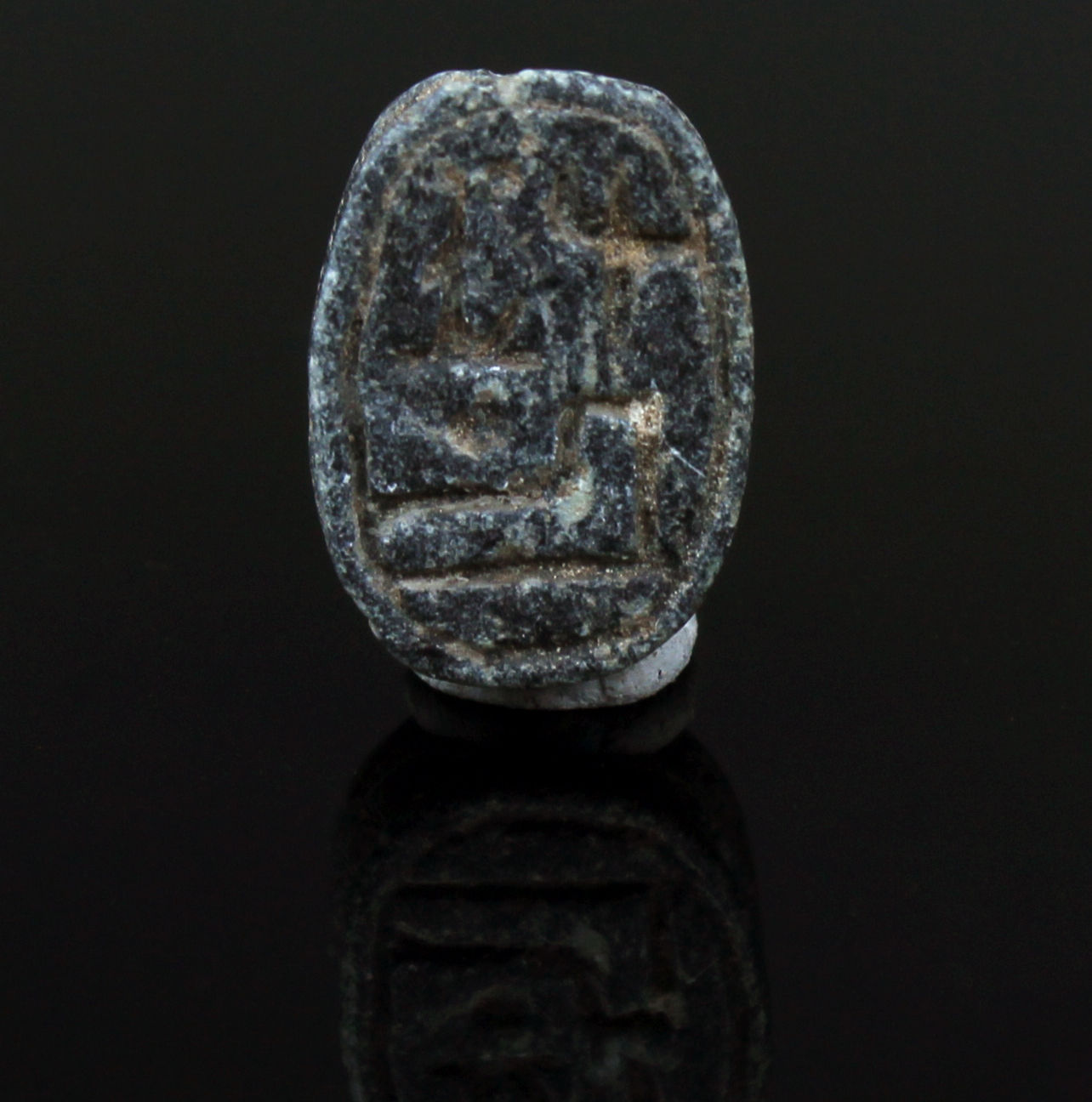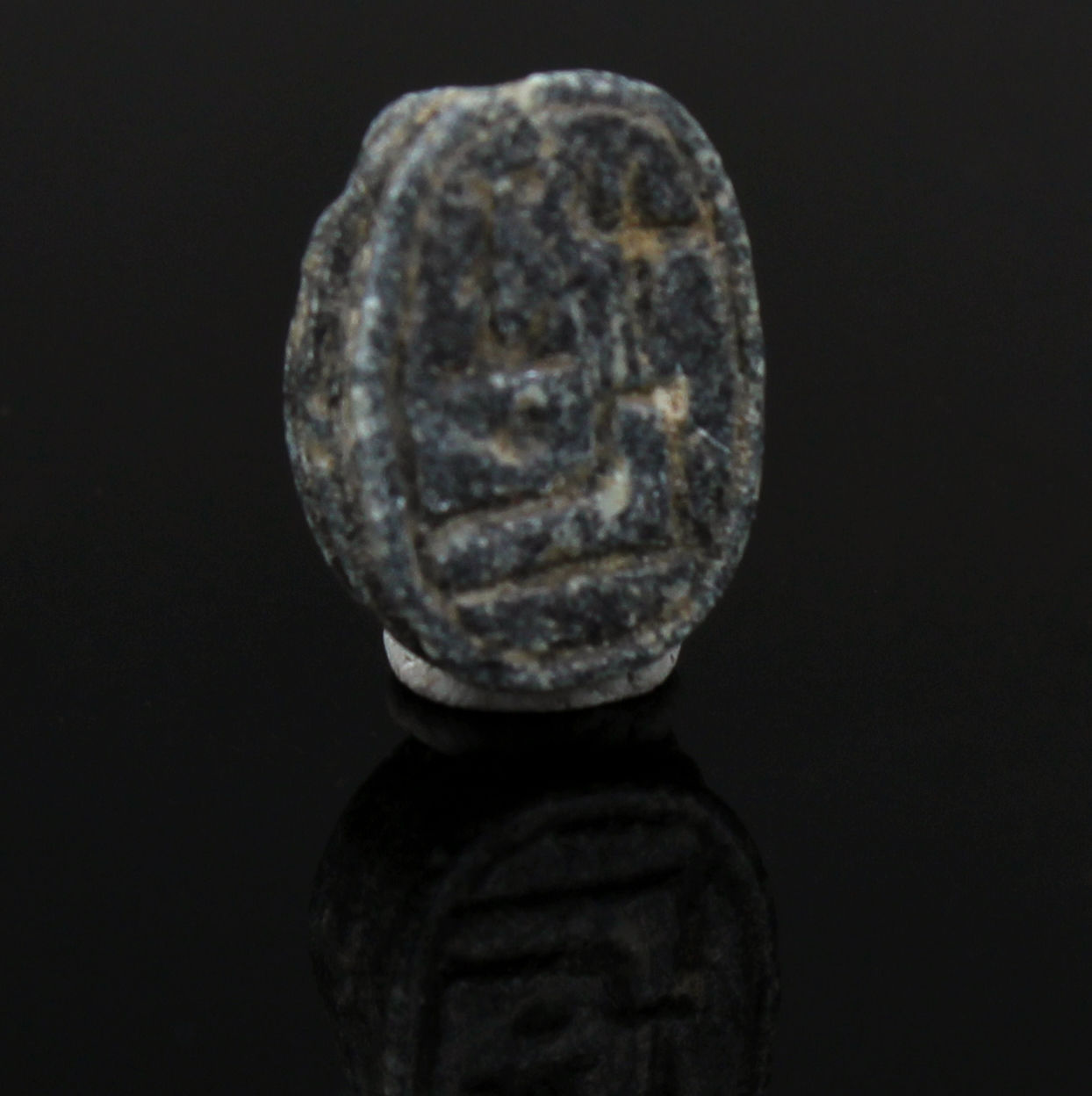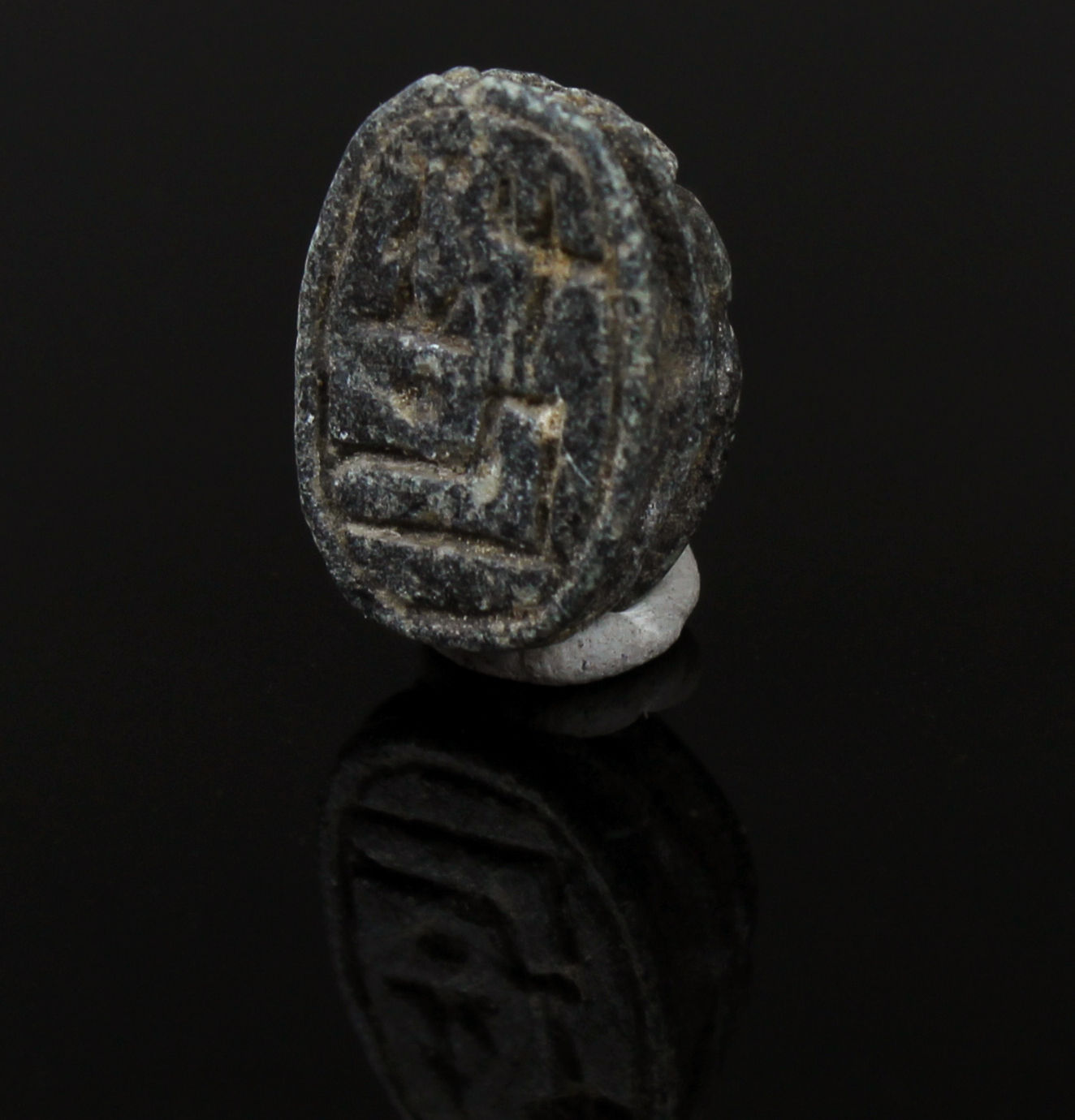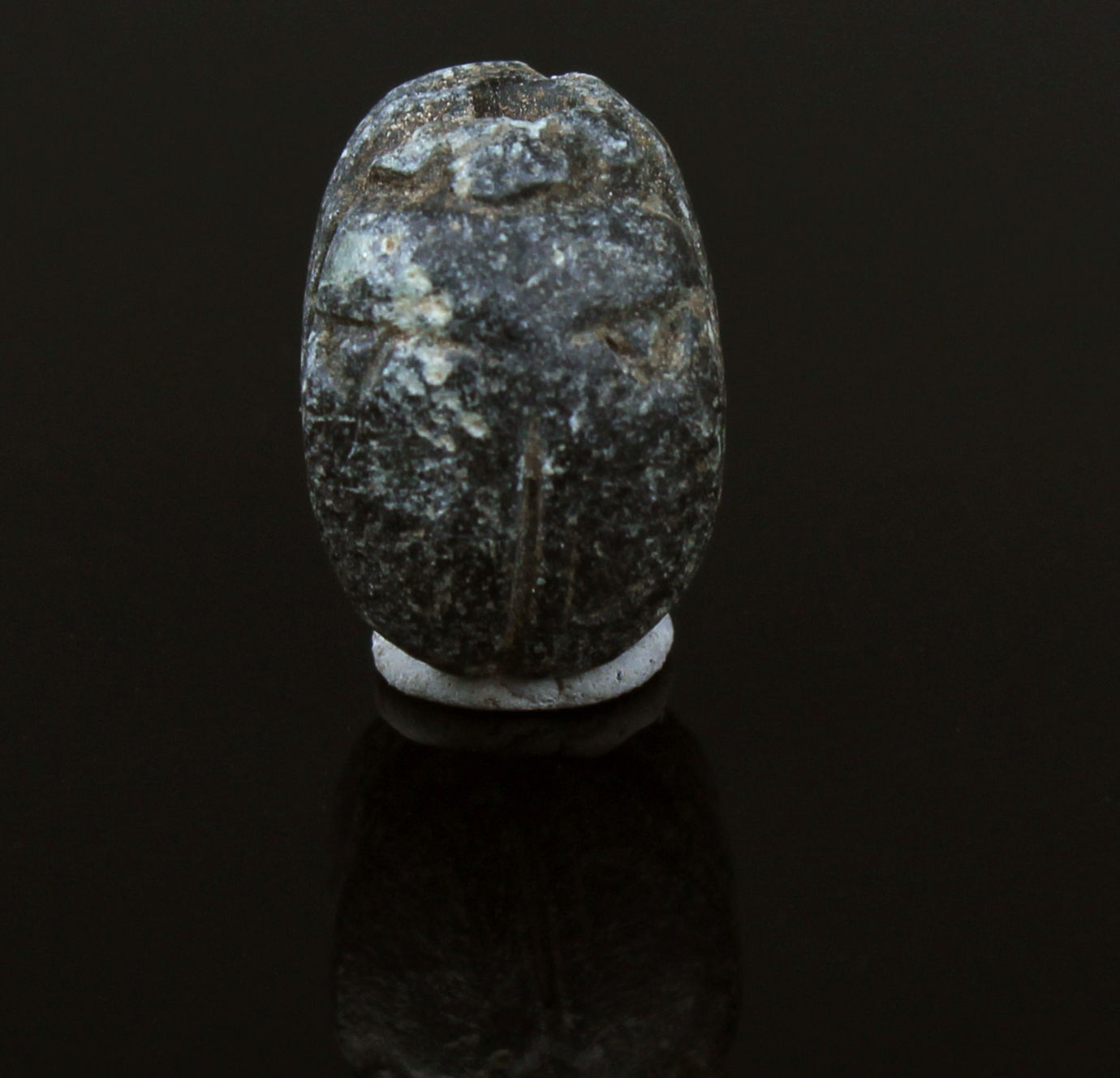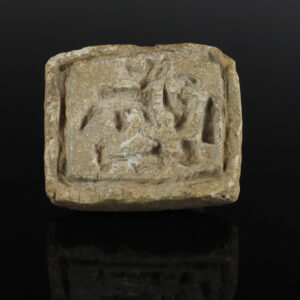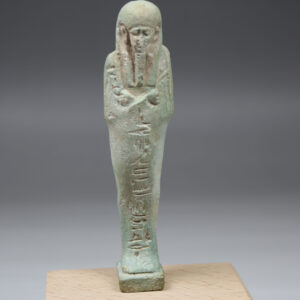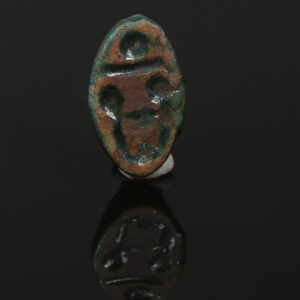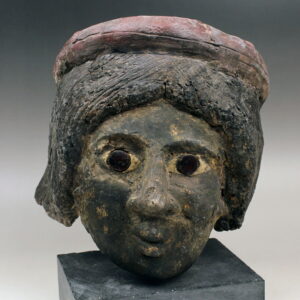Description
| ITEM | Scarab as a commemorative of Ramesses II or prenomen of Shoshenq III |
| MATERIAL | Black steatite |
| CULTURE | Egyptian |
| PERIOD | New Kingdom to Third Intermediate Period, 1279 – 664 B.C |
| DIMENSIONS | 15 mm x 10 mm |
| CONDITION | Good condition |
| PROVENANCE | Ex American egyptologist collection, active in the early part of the 20th century, brought to the US with the family in 1954. |
Scarabs served as important commemorative artifacts during the reign of Ramesses II, often produced to celebrate significant events or achievements of the pharaoh. These scarabs typically featured inscriptions and iconography glorifying Ramesses II’s military victories, monumental building projects, or religious devotion. For example, scarabs commemorating Ramesses II’s victory at the Battle of Kadesh against the Hittites in 1274 BCE depicted scenes of the battle and praised the pharaoh’s courage and prowess in overcoming his enemies. Other scarabs celebrated Ramesses II’s construction of massive temples and monuments, such as the Great Temple of Abu Simbel, portraying the pharaoh as a divine ruler favored by the gods.
Similarly, scarabs bearing the prenomen of Shoshenq III, a pharaoh of the 22nd Dynasty who ruled Egypt during the Third Intermediate Period (circa 8th century BCE), served as commemorative artifacts reflecting the political and religious climate of the time. Shoshenq III’s prenomen, Usermaatre Setepenamun, emphasized his divine mandate to rule and his connection to the god Amun, the chief deity of the Egyptian pantheon. Scarabs featuring Shoshenq III’s prenomen often depicted the pharaoh in traditional regalia, wearing the double crown of Upper and Lower Egypt, and offering homage to the gods, symbolizing his role as a pious ruler devoted to maintaining Maat, the cosmic order.
These commemorative scarabs played a vital role in promoting the legitimacy and authority of Egyptian rulers, both domestically and abroad. They were distributed as gifts to loyal subjects, foreign allies, and members of the royal court, serving as tangible symbols of royal favor and patronage. Additionally, scarabs bearing the names and titles of pharaohs like Ramesses II and Shoshenq III were buried with the deceased as part of funerary offerings, believed to provide protection and assistance in the afterlife.


